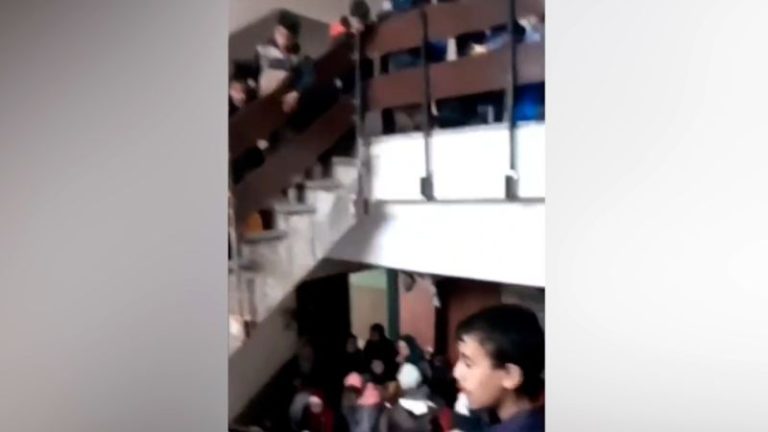Israeli military forces have withdrawn from Gaza’s largest hospital, Al-Shifa, after a 14-day siege that witnesses and Gazan authorities say left the medical facility largely destroyed.
“The situation is very bad,” said Mahmoud Bassal, a spokesperson for Gaza’s Civil Defense, on Monday. Al-Shifa is “completely destroyed and burned down. Many of its buildings are totally destroyed or charred,” he said.
“Injured and dead bodies fill the hospital grounds,” he added. “There are bodies buried in the hospital yards.”
Images from the area showed widespread destruction with charred and pockmarked buildings inside the complex.
More than 30 wounded people were transported from Al-Shifa to the Al-Ahli Baptist Hospital east of Gaza City, Bassal said.
The Israel Defense Forces (IDF) confirmed their withdrawal in a statement on Monday, saying they had completed “precise operational activity” in the area.
The Ministry of Health in Gaza said about 3,000 people were inside Al-Shifa when the IDF began its raid on March 18, and that those attempting to leave were being targeted by snipers and fire from helicopters. Hamas previously accused Israel of striking targets “without regard” to the patients or medical staff inside – a claim echoed by people at the complex.
Targeting hospitals in wartime is prohibited under international law, but those standards change if enemy combatants are using the facility to attack an enemy.
The IDF said that during the raid, its troops “killed terrorists in close-quarters encounters, located numerous weapons and intelligence documents throughout the hospital, while preventing harm to civilians, patients, and medical teams.”
It has also said that civilians, patients, and medical teams were evacuated during the operation — though Palestinians inside and around Al-Shifa reported civilian casualties and arrests. Eyewitnesses have said medical personnel and other civilians were detained by Israeli troops.
Israel has for years said that Hamas fighters are sheltering in mosques, hospitals and other civilian places to avoid Israeli attacks. Hamas has repeatedly denied the claims.
‘Like a horror movie’
“Bulldozers crushed bodies of people everywhere around and in the yard of the hospital,” said Al-Za’anoun.
After the withdrawal, people began arriving at the destroyed complex to search for missing family members, he said, adding: “We found entire families dead and their bodies are decomposed in houses around the hospital.”
Those still alive in the complex are malnourished, with some survivors saying they had to share one bottle of water among six people each day, Al-Za’anoun said.
Second raid
This raid was the second of its kind at the hospital, with the IDF first raiding Al-Shifa in November. By January, the IDF said it had completed dismantling Hamas’ command structure in northern Gaza.
Israel’s closest ally, the United States, has repeatedly backed Israeli assessments that Hamas and other Gaza militants used Al-Shifa’s medical complex as a command hub, and to hold hostages and store weapons.
Asked about the attack on Al-Shifa, US National Security Adviser Jake Sullivan said on March 18 that “Hamas came back into Shifa” after Israel had cleared the hospital of the militant group.
Meanwhile, the siege has been condemned by international organizations, with World Health Organization (WHO) Director General Tedros Adhanom Ghebreyesus saying in March, “Hospitals should never be battlegrounds.”
WHO and other humanitarian groups had been warning of an ever-nearing famine in northern Gaza. By late March, 70% of the population was suffering with catastrophic levels of hunger, according to a UN-backed report.
All 2.2 million people in Gaza do not have enough food to eat, with half of the population on the brink of starvation and famine projected to arrive in the north “anytime between mid-March and May 2024,” according to the Integrated Food Security Phase Classification (IPC).

